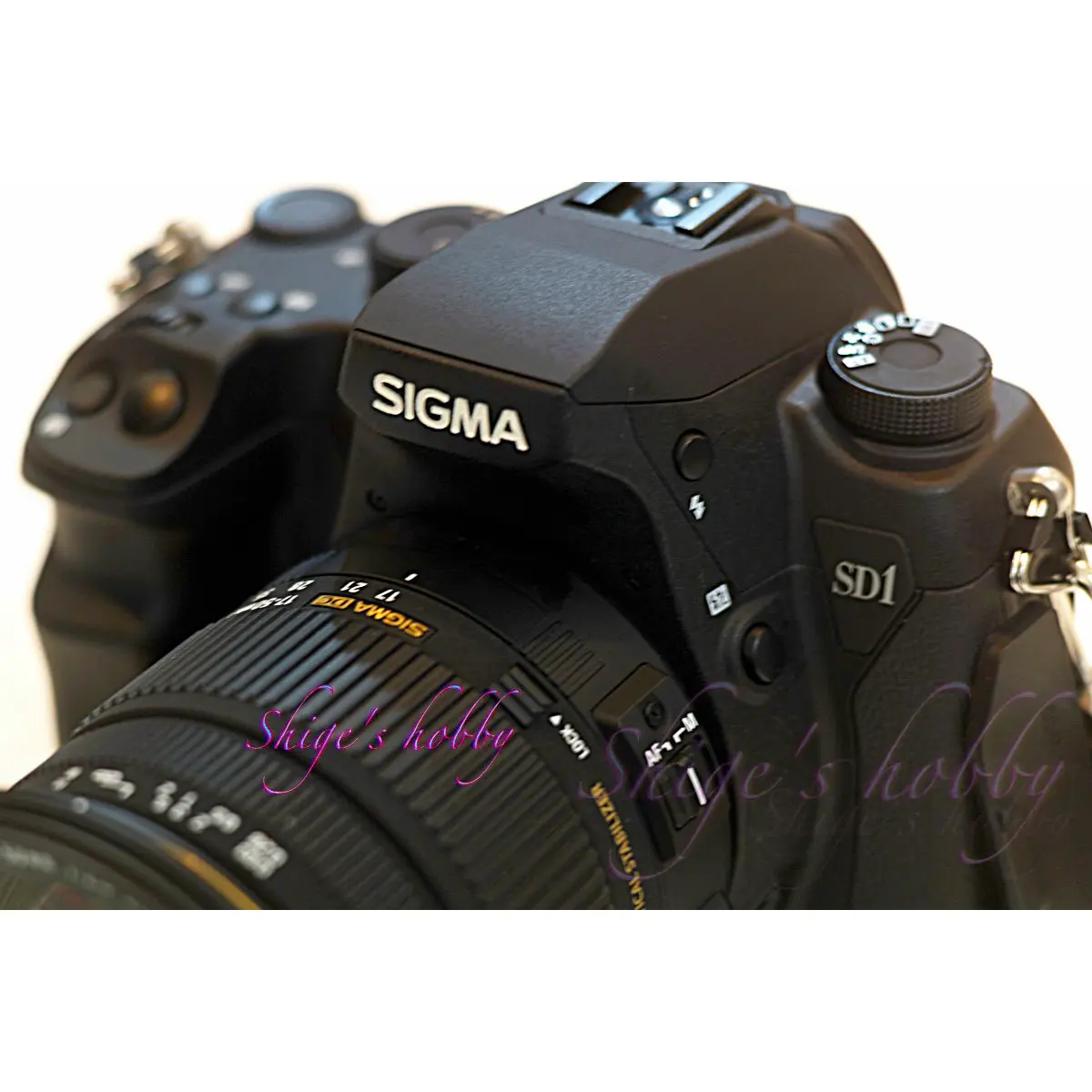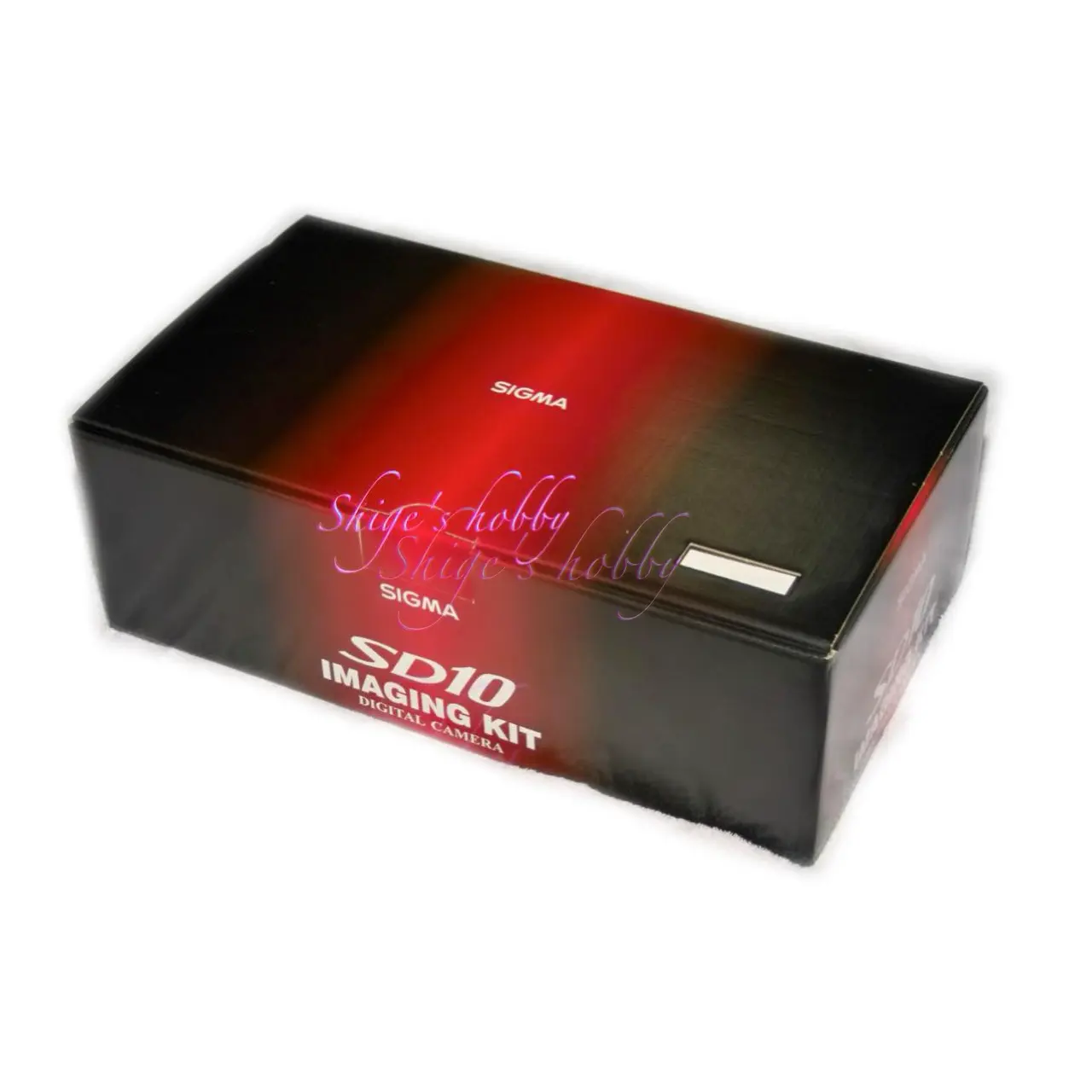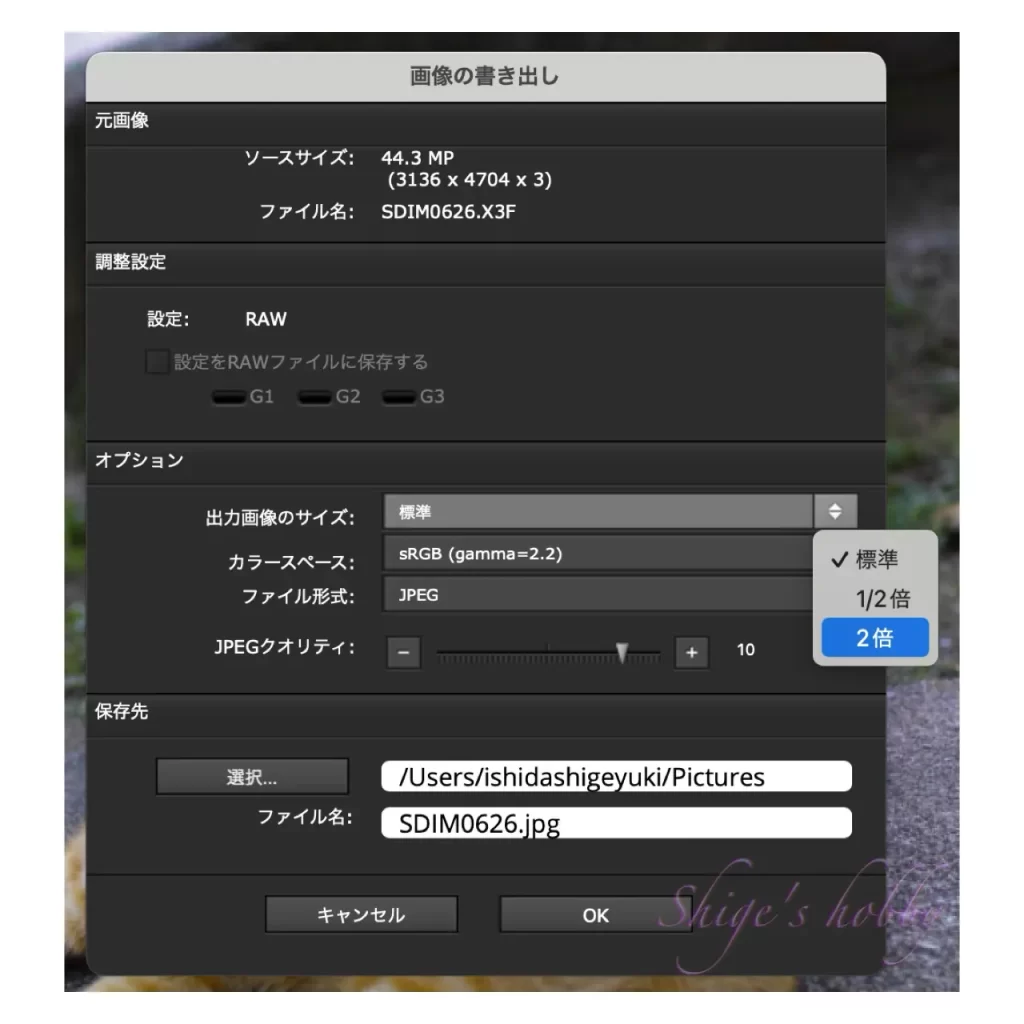Last updated on 2025-09-02
Reviews and photo examples of the SIGMA SD1 / SD1 Merrill.
Table of contents
Gallery
写真サンプルの撮影は、
- 18-35mm F1.8 DC HSM | Art
- 30mm F1.4 DC HSM | Art
- 400mm EX HSM
Review


1.Overview
The SIGMA SD1 is a digital SLR camera equipped with a third-generation FOVEON sensor that Sigma launched in 2011 for 700,000 yen.
The price of 700,000 yen would not bother the wealthy, but the comments from unrelated onlookers at the time, when there were relatively many low-price users, were harsh, so in 2012 the price was reduced to just under 200,000 yen and the camera was renamed the SD1 Merrill and released.
As the name SD1 suggests, it is the pinnacle of SIGMA’s SLRs, and as of 2022 it is Sigma’s last SLR camera.
The sensor size is 1.5 times APS-C size in 35mm format, and the resolution of the image generated by 14.5 million x 3 is 14.5 million pixels, but JPEG recording and SIGMA PhotoPro can also output higher pixels by combining pixels.

The battery remains the same as the SD14/SD15, the BP-21, but the model number was changed to BP-22 *1. The difference between the two is the battery capacity, with the BP-21 being 7.4V-1500mAh and the BP-22 being 7.4V-1200mAh. This battery has many compatible shapes, including the Konica Minolta NP-400 (7.4V-1500mAh) and the Pentax D-LI50 (7.4V-1620mAh), which have the same shape. The Sigma BP-22 has the smallest capacity. There are also Chinese-made compatible batteries that are listed as 7.4V-2300mAh, but it is unclear whether they actually have that capacity.
The recording media has returned to compact flash from the SD15’s SD card.
As with other FOVEON sensor cameras, an IR cut filter that also serves as a dust protector is attached just behind the mount, so care must be taken when handling this. The mirror of the camera is removed when cleaning the sensor, but if you apply force at an angle, it will break. Sigma seems to be out of stock, so if it breaks, you will need to determine the components of the light that should be cut and procure a filter of the required size, which will be quite troublesome.
2.Usability
The SD1 processes about nine times as much information as the SD15, so the lightness of the SD15 is gone, and the feeling of use was like a throwback to the SD10. Also, the 15MP*3-layer Foveon sensor was a peaky and nervous image element that was meant to be used only during the day.
I wasn’t interested in buying the SD1 when it was first released, so I got it when it became the SD1 Merrill. Maybe because I was used to Leica’s low-passless images, the increase in actual pixels to 15MP was not that impressive, and it was sensitive to blur when shooting, and I could no longer recognize the difference between the reduced images and the Bayer, so I got rid of it before I could use it much, as my main photography equipment had shifted to Leica digital.
After that, I found a cheap second-hand SD1 (without a brand name) and tried it out, and it was no different from the SD1 Merrill, as you would expect. I think it would have been better to keep it, since an SD1 without the Merrill logo on the rear LCD screen would be rare. Even now, the daytime photos are too high resolution, and you can get a glimpse of the power of the FOVEON sensor.
When I used an M42 lens via the SIGMA SA mount-M42 mount adapter, the results were heavily greenish, which put me off. I decided to only use SA lenses with the SD1, so I bought several lenses and took it to the hawk crossing at Shirakaba Pass. If you look at the top right of the cat example, even the Sigma lens produces some suspicious colors. The double line blur in the same place may be a problem with the lens, but it doesn’t make a very good impression.
As of 2024, it is not possible to repair it at the manufacturer, but it maintains a relatively high price, so I am hesitant to buy it.
3.Summary
In conclusion, to sum up the SIGMA SD1, its camera functions are on par with mid-range or low-end models from major camera manufacturers, so there’s nothing particularly noteworthy about it. Therefore, it’s not a camera worth buying in 2025.
It’s easy to praise Sigma, a company with little track record as a camera manufacturer, for releasing the SD1 with its in-house developed sensor and original body. The price of the original SD1 was a bit of a problem, but that’s part of Sigma’s charm.
It might be worth owning one as a Sigma memorial.
・X3F files
X3F files store information on the three colors R, G, and B for each pixel, so the amount of data is three times that of a normal Bayer sensor.
I have been using SIGMA PHOTO PRO (hereinafter referred to as SPP), which processes X3F, since the SD9 era, but I complained that it was unstable and slow. However, when I used it on a Mac mini equipped with an M2 Pro in 2024, I hardly saw any accidental crashes of SPP, and I realized that the image processing speed had reached a practically sufficient speed. It was an event that made me feel the benefit of the improved processing speed due to the increased CPU power of the PC.
I also tried using a freeware utility software that converts X3F to DNG, but in the version I used, it was difficult to achieve the same quality as SPP unless the image after DNG conversion was processed quite a bit, and I had the impression that it was difficult to master. It is unclear whether it has been improved since then.
If the image after DNG conversion can be obtained as equivalent to the SPP default, the ideal workflow for users who are accustomed to other software would be to fine-tune it with other software, but it was not so easy. The conversion software is freeware created by an individual, so users have no right to complain.
I found out that the image can be developed using the image processing software Affinity Photo, so I tested it on this page. I know that I have to study the adjustment method carefully to get the same results as SPP, but since SPP can output adjusted images without stress, I haven’t pursued it too deeply. I think that the better workflow for now is to output JPGs using SPP and then make final adjustments using Affinity Photo.
As of 2024, development of a new Foveon sensor seems to have stalled. I am curious to see if I will come across new X3F data in the future.
The SD1 camera
The following is just my own speculation, but considering the time between the release of the SD1 (released in 2011) and the SD15 (released in 2010), the release interval seems too close for a camera manufacturer with limited development resources.
Therefore, the SD15 and SD1 were developed in parallel, and while the development of the SD15 was delayed, the SD1 ended up being released earlier than expected, so it is speculated that the SD1 was released without any consideration of the sales strategy.
It is also interesting that the recording memory card standards used by the SD15 and SD1 are different. The SD15, which was released first, uses SD cards, while the SD1, which was released later, uses Compact Flash.
Considering the sales year, it seems reasonable to use SD cards for both, since the large-capacity SDXC card was put into practical use in 2009, but it seems reasonable to speculate that the SD1 was developed earlier and released as a Compact Flash. In reality, Compact Flash may have been adopted simply for the sake of media reliability.
This is a bit of a nuisance for outsiders, and Sigma itself may not care much about its image, but I think it would have been a better choice to hold off on the SD1 until 2012, when it could be released at the price of the SD1 Merril. Alternatively, if the SD1 had been released in 2024, the price of 700,000 yen for the SD1 would have been justified, since flagship cameras from all companies would have risen in price across the board and 700,000 yen would not have been too expensive.
Of course, these are all hindsight, and we don’t know what actually happened on the ground, but Sigma’s inconsistent sales strategy is one example that confuses users.
However, for releases after the SD1, the manufacturer’s announcements have become more accurate, and when the sd quattro is released, it has been announced that there will be a high-pixel version, the “H”. The company also announces the development status of the full-frame FOVEON sensor from time to time. When I read an article that says that the development of sensors is not going well as of 2024, I worry about how long Sigma, as a company, will continue to invest in the asset of FOVEON, which has not generated profits for eight years since 2016.
If there is demand for used FOVEON sensor cameras, I would like them to supply products with minor changes, but if the price of the SD1 is 300,000 yen, taking into account the cost of materials as of 2024, and if you ask whether it will sell, it probably won’t sell in quantities that are enough to procure the necessary parts and maintain the production line.
There is also the option of selling it at the list price only on Sigma Online, but the manufacturing problem mentioned earlier will also be involved. It makes me feel that we are living in an age where it is difficult for companies to continue to supply products that do not sell in large numbers.
And while I am interested in the fact that such a camera was commercialized in 2012 and sold for around 100,000 yen, I also feel that it was a very untimely product.
Specification and Series camera
| Items | SD1 | SD1 Merrill | sd Quattro | sd Quattro H |
| Camera effective pixel count | 48 million pixels (total pixels) 46 million pixels (effective pixels) (4,800×3,200×3 layers) | ← | 33.2 million pixels (total pixels) 29.5 million pixels (effective pixels) | 44.7 million pixels (total pixels) 38.6 million pixels (effective pixels) |
| Image sensor | 3rd generation FOVEON X3® (CMOS) | ← | 4th generation FOVEON X3® (CMOS) | ← |
| Image sensor size | APS-C 23.5×15.7mm | ← | APS-C 23.4mm×15.5mm | APS-H 26.7mm×17.9mm |
| Camera Mount | Sigma SA bayonet mount | ← | ← | ← |
| Back LCD | 3inch, 0.46 million dots | ← | 3inch, 1.62 million dots | ← |
| Finder | Pentaprism single-lens reflex finder | ← | Electronic viewfinder (approximately 2.36 million dots color liquid crystal) | ← |
| Battery | Lithium ion battery (BP-21 / BP-22) | ← | Lithium ion battery (BP-61) | ← |
| Size(mm) W x H x D | 145.5 × 113.5 × 80.0 | ← | 147 x 95.1 x 90.8 | ← |
| Weight(g) | 700g (Exclude battery) | ← | 625g (Exclude battery) | ← |
| Release date | 2011.06. 10 | 2012.03.09 | 2016.7.7 | 2016.12.20 |
| Price(Yen/No-tax) | Open Reference price (700,000 yen) | Open Reference price (200,000 yen) | Open Reference price (81,000 yen) | Open Reference price (126,800 yen) |
Options
- Vertical grip PG-31
- All Sigma SA mount lenses
Reference links
Update history
- 2024.06.26
- 2024.02.19
Affiliate
- Please see the disclaimer regarding advertising here.
- Italicized links in the text are advertisement links that take you to other sites.
- Sigma(Amazon Affiliate link)
- Sigma lens(Amazon Affiliate link)
- Sigma books(Amazon Affiliate link)

Amazon Prime Sale



Be First to Comment